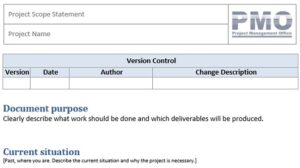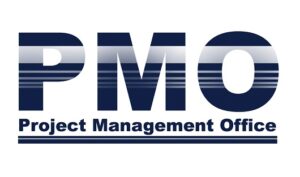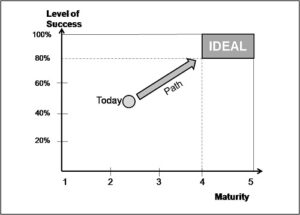Projects don’t succeed because of tools, templates, or processes — they succeed because of people and the resources that empower them.
The PMBOK® Guide – Eighth Edition (2025) recognizes this reality through the Resources Performance Domain, an area of focus that ensures projects have the right people, materials, tools, and environments to deliver value effectively.
More than simple staffing or procurement, this domain emphasizes capability enablement — the process of developing, aligning, and supporting resources to achieve sustained performance.
It reflects PMI’s evolution toward systems thinking and value delivery, where resources are managed not just as inputs, but as dynamic contributors to strategic outcomes.
What Is the Resources Performance Domain?
The Resources Performance Domain is one of the integrated performance domains described in the PMBOK® Guide – Eighth Edition.
Its purpose is to ensure that adequate and appropriate resources are available, managed, and supported throughout the project life cycle to achieve desired results.
Resources in this context include:
- Human Resources: The people who plan, execute, and lead project work.
- Physical Resources: Materials, equipment, and facilities.
- Information Resources: Knowledge assets, data, and documentation.
- Financial Resources: Funding allocated to resource use and capacity building.
This holistic view means that project performance depends on how well these resources are mobilized, utilized, and sustained over time.
From Resource Management to Capability Enablement
In older PMBOK editions, resource management was primarily administrative — allocating people and equipment to tasks. PMBOK 8 expands this perspective to emphasize:
- Capability over Capacity – It’s not just about having enough people but ensuring they have the right skills, tools, and mindset.
- Engagement and Empowerment – Teams perform best when motivated, trusted, and aligned with project purpose.
- Environment and Culture – Effective leaders create psychological safety and support systems that sustain performance.
- Continuous Adaptation – Resource needs evolve as the project progresses, requiring proactive monitoring and adjustment.
This evolution transforms resource management from a logistical activity into a leadership-driven performance function.
Key Components of the Resources Performance Domain
According to PMBOK 8, this domain encompasses several key components that together ensure resources are optimized for value delivery.
1. Resource Planning
Effective planning identifies what resources are needed, when, and for how long. PMBOK 8 recommends using resource calendars, capacity assessments, and workload distribution plans that reflect realistic availability rather than ideal assumptions.
2. Acquisition and Onboarding
Securing resources involves negotiation, procurement, and stakeholder collaboration. Onboarding ensures individuals understand project objectives, governance structures, and success criteria from the start.
3. Development and Empowerment
Project teams require ongoing training, coaching, and feedback. Empowerment means giving them authority and autonomy within defined boundaries.
4. Performance Support
Resources need proper infrastructure, communication tools, and physical or virtual environments conducive to productivity. PMBOK 8 emphasizes sustainability and health as part of performance support.
5. Monitoring and Optimization
Regular evaluation of resource performance allows teams to identify skill gaps, adjust workloads, and reassign assets to maximize effectiveness.
The Human Element: Leadership and Team Dynamics
The PMBOK 8 aligns closely with PMI’s Talent Triangle, emphasizing power skills like leadership, communication, and collaboration.
Within the Resources Performance Domain, the project manager acts as a leader of enablers — responsible for fostering trust, engagement, and accountability.
Key Leadership Practices Include:
- Creating Psychological Safety: Encourage open dialogue without fear of blame.
- Motivating through Purpose: Link daily work to broader organizational value.
- Resolving Conflicts Quickly: Address tensions early to preserve team cohesion.
- Recognizing Contributions: Acknowledge effort and celebrate milestones.
When leaders apply these practices, resource utilization transforms into collective ownership — a hallmark of high-performing teams.
Balancing People and Physical Resources
Resource optimization requires balance between human capability and physical constraints.
PMBOK 8 encourages the use of integrated tools like resource histograms, responsibility matrices (RACI), and digital PMO dashboards to visualize allocation and dependencies.
Practical Actions:
- Monitor utilization rates to prevent burnout.
- Ensure physical assets (equipment, facilities) are maintained and scheduled effectively.
- Use predictive analytics or AI to forecast future resource needs.
- Reassign underutilized resources to areas of higher impact.
This balance ensures that productivity remains sustainable throughout the project lifecycle.
Resource Performance Metrics
Performance in this domain must be measurable to drive continuous improvement. PMBOK 8 suggests a mix of qualitative and quantitative indicators, emphasizing both efficiency and effectiveness.
Common Resource Performance Indicators (RPIs):
- Resource Utilization Rate: Percentage of available time spent on productive work.
- Skill Readiness Index: Degree to which team skills match project needs.
- Employee Engagement Score: Measures morale, motivation, and commitment.
- Turnover Rate: Indicates stability and retention effectiveness.
- Equipment Downtime Ratio: Percentage of time physical resources are unavailable.
- Training Impact Metric: Correlates learning investments with performance improvements.
These metrics allow PMOs and project leaders to connect human and physical performance with overall project outcomes.
Tailoring the Resources Performance Domain
As with all PMBOK 8 domains, the Resources Performance Domain must be tailored to the project context.
| Project Type | Tailoring Approach |
|---|---|
| Predictive | Formal staffing plans, hierarchical reporting, detailed skill matrices. |
| Agile / Adaptive | Self-organizing teams, flexible roles, and peer-based performance evaluation. |
| Hybrid | Blended approach — defined governance with adaptive team structures. |
Tailoring ensures that governance remains effective without restricting team agility, aligning with the PMBOK 8 principle of balancing control and flexibility.
Integration with Other PMBOK 8 Performance Domains
Resources connect with nearly every other domain in the PMBOK 8 framework:
- Stakeholder Domain: Ensures resource allocation reflects stakeholder priorities.
- Governance Domain: Defines accountability, authority, and performance oversight.
- Finance Domain: Aligns funding with resourcing needs and cost optimization.
- Risk Domain: Identifies capacity gaps, turnover, and resource dependencies.
- Scope and Schedule Domains: Synchronize resource availability with planned deliverables.
This systemic integration supports continuous value delivery, where resource performance directly influences the organization’s ability to achieve its strategic goals.
Resource Sustainability and Well-Being
PMBOK 8 also reflects the growing recognition of sustainability and human well-being as performance factors.
Long hours, poor work-life balance, or unsafe environments reduce efficiency and compromise quality.
Best practices include:
- Implementing sustainable work pacing and rest cycles.
- Providing adequate tools and ergonomics for remote and hybrid teams.
- Ensuring diversity, equity, and inclusion in team composition.
- Encouraging self-care and mental health awareness.
The goal is to enable long-term capability, not just short-term output.
Challenges in Resource Performance
Common obstacles that organizations face include:
- Skill Gaps: Lack of alignment between talent and project needs.
- Resource Overload: Competing demands across multiple initiatives.
- Inadequate Infrastructure: Insufficient tools or outdated systems.
- Resistance to Change: Teams struggling with new technologies or methodologies.
PMBOK 8 advocates proactive capacity management, upskilling, and transparent communication as the antidotes to these issues.
Conclusion
The Resources Performance Domain in PMBOK 8 represents a pivotal evolution in how organizations view people, tools, and capabilities.
It replaces the traditional view of “resource allocation” with a broader concept of resource enablement — creating conditions where people and systems can thrive.
By integrating leadership, sustainability, and adaptability into resource management, PMBOK 8 ensures that teams aren’t just available — they’re empowered, equipped, and aligned to deliver lasting value.
In this new paradigm, resources are not costs to be minimized but investments in performance and organizational excellence.
Call to Action:
References
Project Management Institute (PMI). A Guide to the Project Management Body of Knowledge (PMBOK® Guide) – Eighth Edition. Newtown Square, Pennsylvania, USA: Project Management Institute, 2025. PMBOK Guide 8: The New Era of Value-Based Project Management. Available at: https://projectmanagement.com.br/pmbok-guide-8/
Disclaimer
This article is an independent educational interpretation of the PMBOK® Guide – Eighth Edition, developed for informational purposes by ProjectManagement.com.br. It does not reproduce or redistribute proprietary PMI content. All trademarks, including PMI, PMBOK, and Project Management Institute, are the property of the Project Management Institute, Inc. For access to the complete and official content, purchase the guide from Amazon or download it for free at https://www.pmi.org/standards/pmbok if you are a PMI member.





